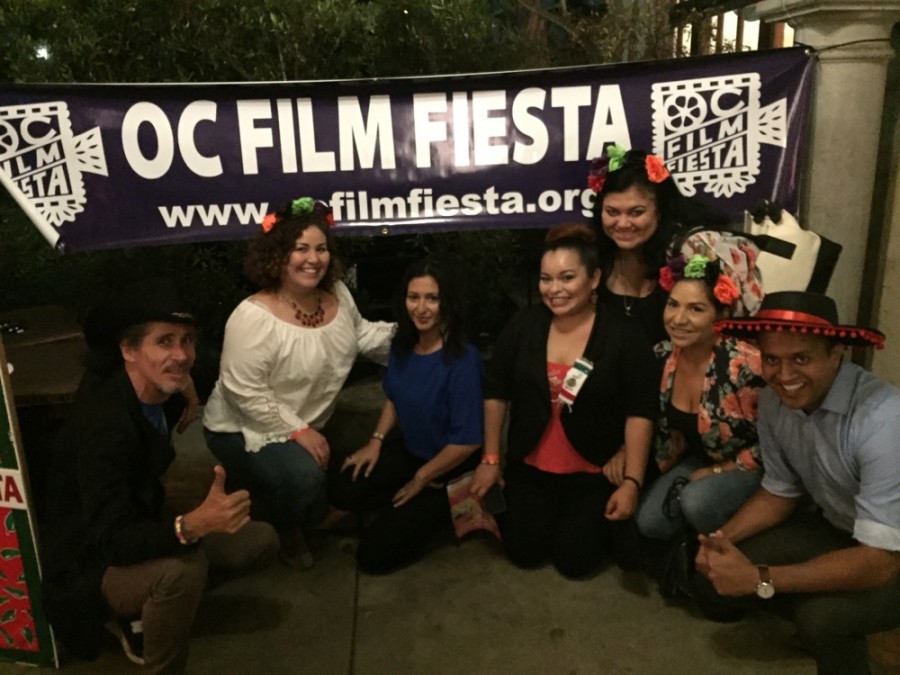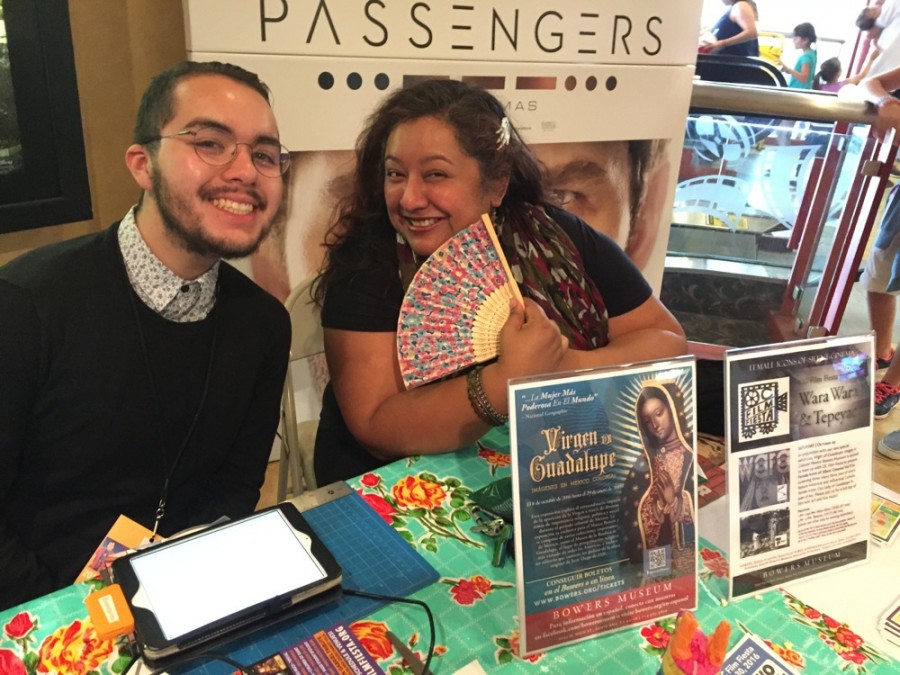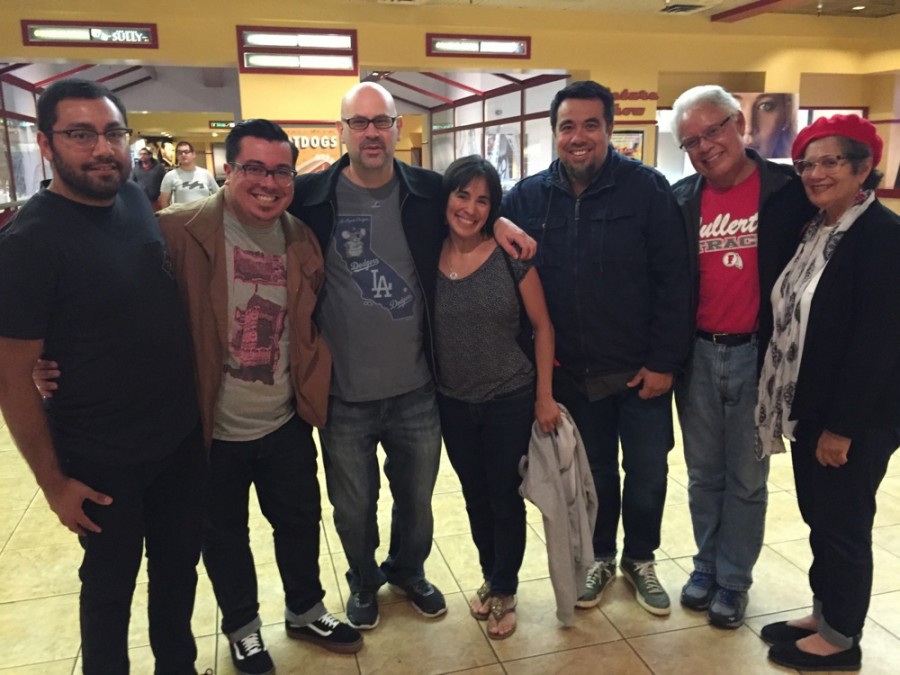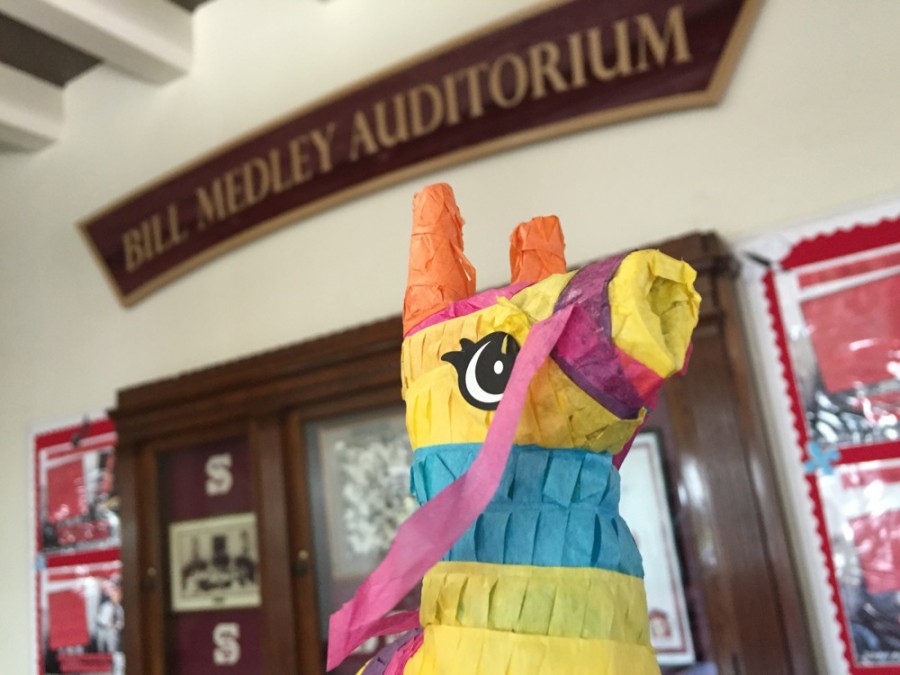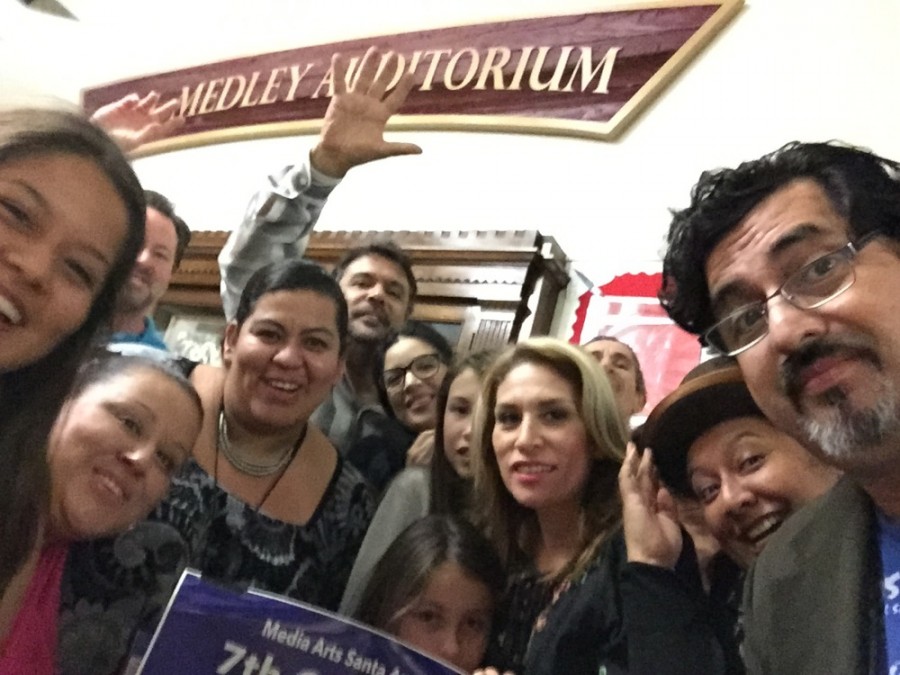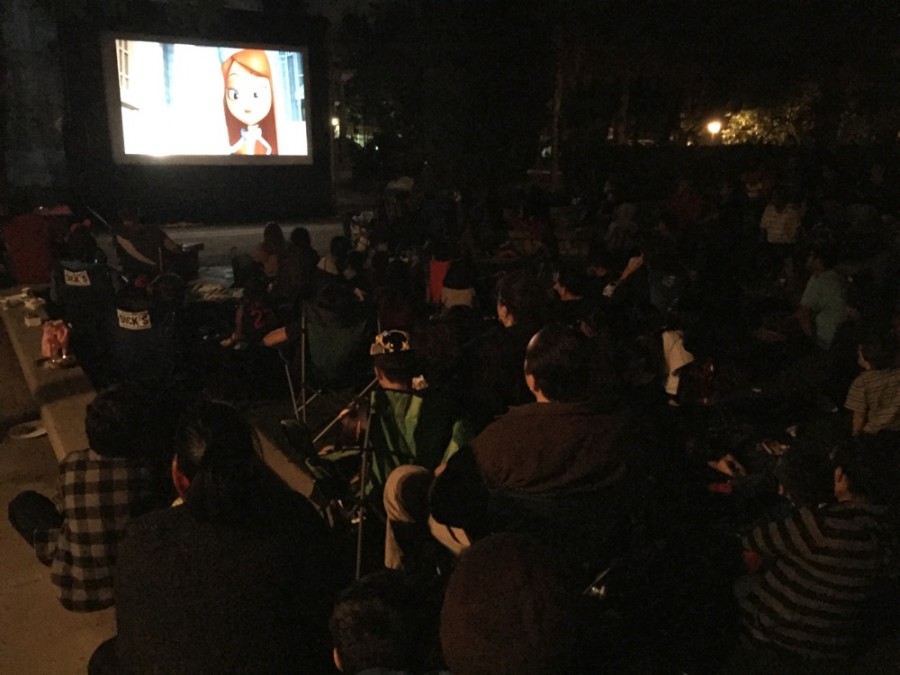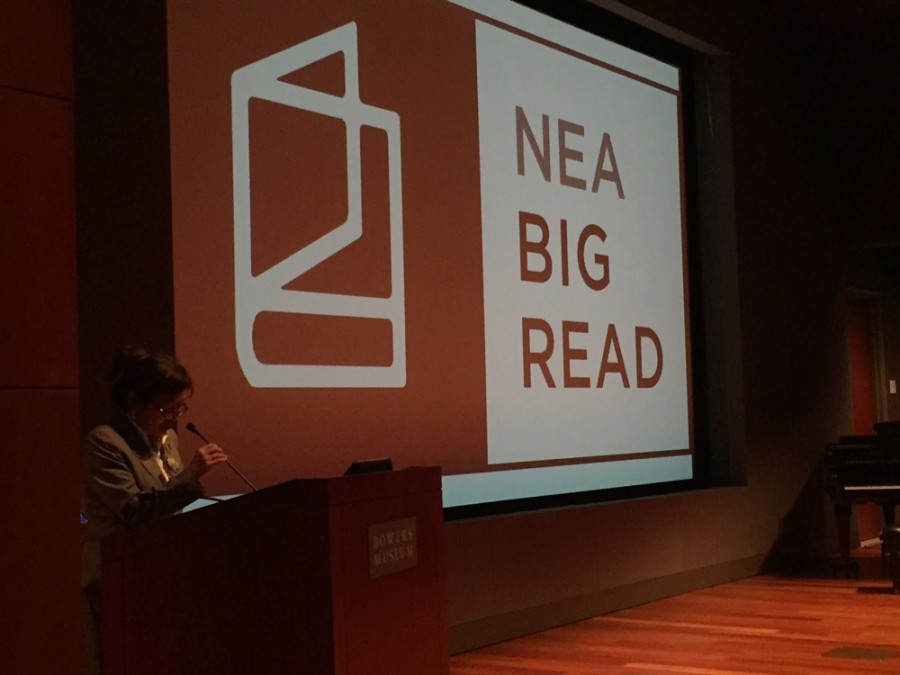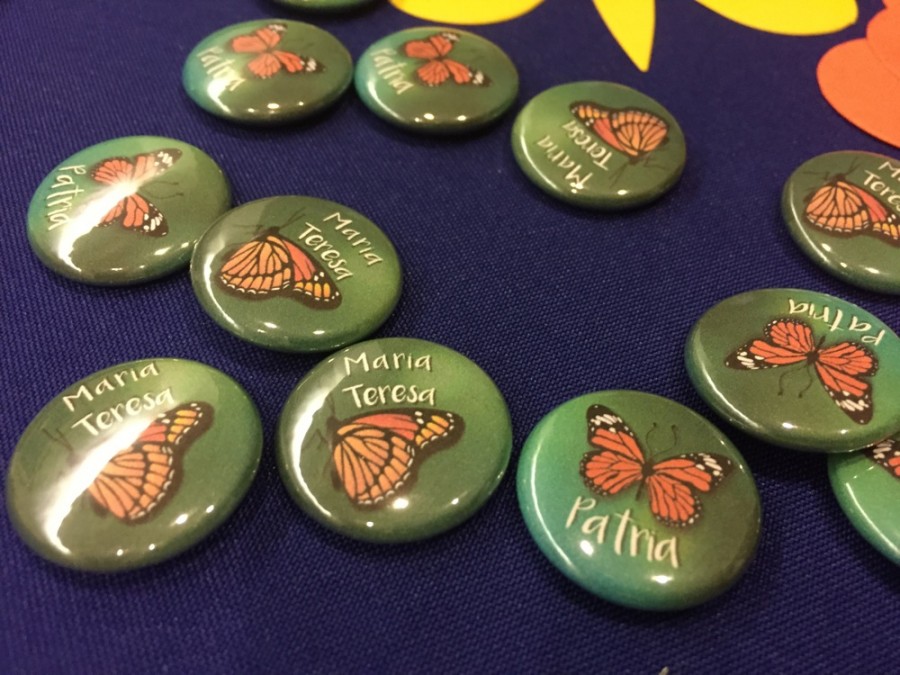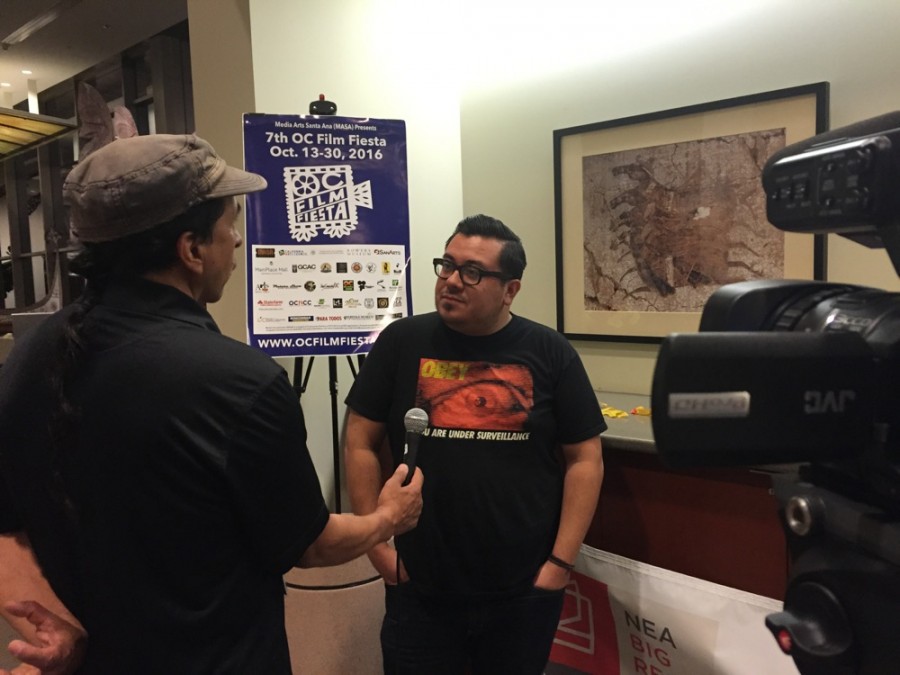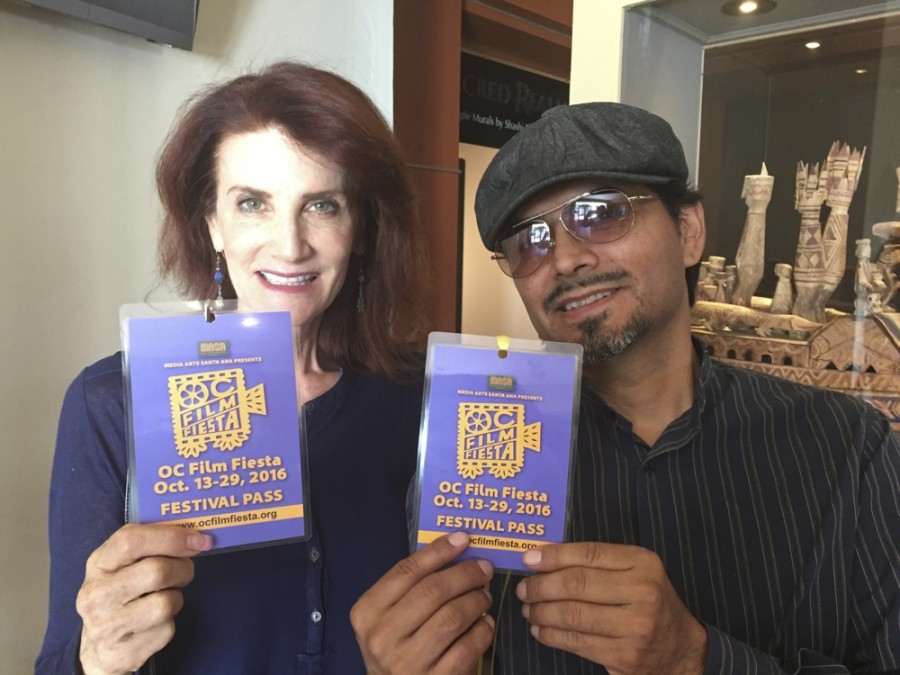2016 OC Film Fiesta
Documentaries
 Las Tesoros de San Antonio are a group of elder women performers, nuestras sabias del Westside of San Antonio with incredible singing careers that soared both locally and internationally in the 1940s, 50s and 60s. They include Rita “La Calandria” Vidaurri, Beatriz “La Paloma del Norte” Llamas, Janet “Perla Tapatia” Cortez, and Blanca “Blanquita Rosa” Rodriguez – four strong mujeres who built the foundations for San Antonio’s rich musical cultura. Through the work of the Esperanza Peace and Justice Center, a 25-year-old grassroots community cultural center, Las Tesoros have reemerged as a fierce quartet, preserving the costumbres and cultura of aquellos tiempos, and inspiring audiences with nostalgia and orgullo en nuestras raices.
Las Tesoros de San Antonio are a group of elder women performers, nuestras sabias del Westside of San Antonio with incredible singing careers that soared both locally and internationally in the 1940s, 50s and 60s. They include Rita “La Calandria” Vidaurri, Beatriz “La Paloma del Norte” Llamas, Janet “Perla Tapatia” Cortez, and Blanca “Blanquita Rosa” Rodriguez – four strong mujeres who built the foundations for San Antonio’s rich musical cultura. Through the work of the Esperanza Peace and Justice Center, a 25-year-old grassroots community cultural center, Las Tesoros have reemerged as a fierce quartet, preserving the costumbres and cultura of aquellos tiempos, and inspiring audiences with nostalgia and orgullo en nuestras raices.
 Children of GIANT is a documentary film that unearths deeply wrought emotions in the small West Texas town of Marfa, before, during and after the month-long production of George Stevens' 1956 feature film, Giant. Based on the controversial Edna Ferber novel of the same name, the film, Giant did not shy from strong social-issue themes experienced throughout post-WWII America. George Stevens, its producer and director, purposely gravitated to the drought-ridden community of Marfa for most all of the exterior scenes. Funded in part by Latino Public Broadcasting (LPB).
Children of GIANT is a documentary film that unearths deeply wrought emotions in the small West Texas town of Marfa, before, during and after the month-long production of George Stevens' 1956 feature film, Giant. Based on the controversial Edna Ferber novel of the same name, the film, Giant did not shy from strong social-issue themes experienced throughout post-WWII America. George Stevens, its producer and director, purposely gravitated to the drought-ridden community of Marfa for most all of the exterior scenes. Funded in part by Latino Public Broadcasting (LPB).
 Dir. Cecilia Domeyko - 2008, USA, 63 min.
Dir. Cecilia Domeyko - 2008, USA, 63 min.
"Code Name: Butterflies," is the first documentary to tell the powerful story of the Mirabal sisters of the Dominican Republic. In the 1950s, Patria, Minerva and Maria Teresa Mirabal, who were known by their secret name of "Butterflies," created a secret resistance movement against Rafael Leonidas Trujillo, one of the most bloodthirsty tyrants the world has ever known. When the dictator had them assassinated making it seem like an accident, the country rose up against Trujillo and a group of conspirators who had been plotting his death but had not dared to move forward, assassinated him. The courage of the Mirabals, simple wives and mothers who helped bring freedom and democracy to their country, is legendary. Today, the Dominican Republic owes much to these incredible women who were willing to sacrifice everything and to fight for what they believed in. The day of Mirabal sisters' death, November 25, has been designated by the United Nations as the "Day of Non-Violence Against Women" in their honor.

 Dir. Tadashi Nakamura - 2016, USA, 64 min.
Dir. Tadashi Nakamura - 2016, USA, 64 min.
MELE MURALS is a documentary on the transformative power of modern graffiti art and ancient Hawaiian culture for a new generation of Native Hawaiians. At the center of the story are two renowned street artists - Estria Miyashiro (aka Estria) and John Hina (aka Prime) - a group of Native Hawaiian youth, and the rural community of Waimea.
Set against the resurgence of Hawaiian language and culture of the past twenty years, Estria and Prime tell how their street art has taken them on personal journeys to discover their history, identity and responsibilities as Hawaiian people. Estria, who left Hawai'i to study art in San Francisco, made a name for himself as an internationally known graffiti artist before returning to reconnect with his Hawaiian roots. Prime, who grew up in the projects and became one of the first kings of the Honolulu graffiti scene, left a life of hustling and drugs after the birth of his first child and returned to the art when he realized it was a way to help youth.
 Dir. John J. Valadez - 2016, USA, 30 min.
Dir. John J. Valadez - 2016, USA, 30 min.
The Head of Joaquin Murrieta is an insightful, irreverent and fascinating journey into the history of California that uses both fiction and documentary storytelling devices to tear open a painful and long ignored reality: the lynching of Mexican Americans in the southwest. In 1849, 19-year-old gold-miner Joaquin Murrieta blazed a four-year trail of revenge and rebellion following the theft of his land, lynching of his brother and the rape and murder of his wife by California settlers. The young Murrieta was killed by bounty hunters who cut off his head and displayed it across California in a jar, charging people a dollar to see their trophy, and enshrining Murrieta in California’s consciousness.
One hundred and sixty-two years later, Peabody Award-winning filmmaker John J. Valadez is convinced he has recovered the head, and together they embark on a quixotic, cross-country road trip through history, memory, and myth to bury the head of Joaquin Murrieta, and finally lay to rest a dark and troubled past, one that has chilling parallels with the filmmaker's own family story.
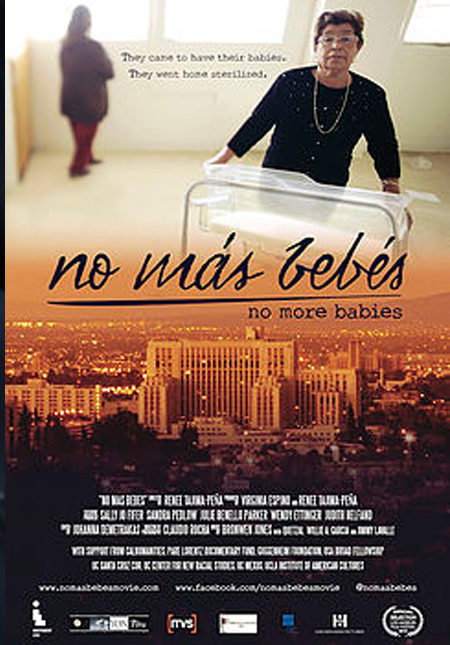 Dir. Rene Tajima-Peña - 2016, USA, 79 min.
Dir. Rene Tajima-Peña - 2016, USA, 79 min.
This important and heartbreaking documentary tells the story of Mexican immigrant women who were sterilized without their knowledge at LA county hospital during the 1970s. With the tireless help of an intrepid, 26-year-old Chicana lawyer and armed with hospital records secretly gathered by a whistle-blowing young doctor, the mothers faced public exposure and stood up to one of LA’s most powerful institutions in the name of justice. They came to have their babies. They went home sterilized. An important chronicle of an era in US health care whose effects are still being felt today.
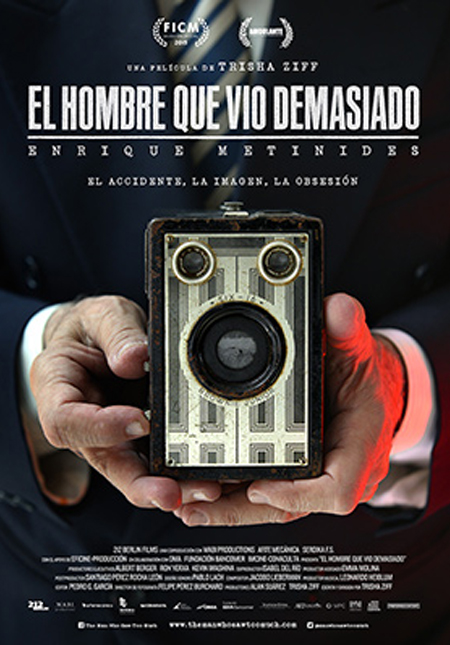 Dir. Trisha Ziff - 2015, Mexico, 89 min.
Dir. Trisha Ziff - 2015, Mexico, 89 min.
Attention photography fans! The 2016 OC Film Fiesta is proud to present THE MAN WHO SAW TOO MUCH, the new Ariel Award-winning documentary about legendary Mexican photographer Enrique Metinides by Trisha Ziff, filmmaker of the phenomenal THE MEXICAN SUITCASE.
THE MAN WHO SAW TOO MUCH is a film about fragility; about a man obsessed with photographing the accident who discovered that the fate of others was his way of connecting to life. What is it about these photographs? When the image of the accident becomes the object of desire? Through the footsteps of Metinides and the work of the contemporary tabloid photographers we discover Mexico City through a narrative of crime scenes and accidents, while we are confronted by our own fascination with death, morbidity, rubbernecking through Metinides’ gaze.


